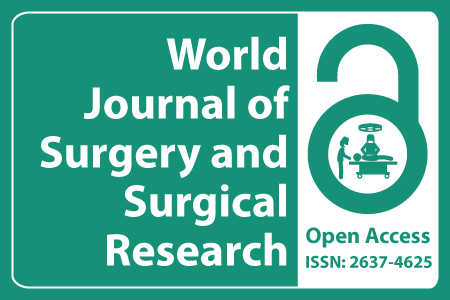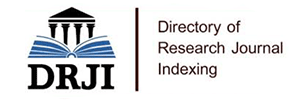
Journal Basic Info
- Impact Factor: 1.989**
- H-Index: 6
- ISSN: 2637-4625
- DOI: 10.25107/2637-4625
Major Scope
- Reconstructive Surgery
- Robotic Surgery
- Aesthetic & Cosmetic Surgery
- Minimal Invasive Surgery
- Surgical Oncology
- Obstetrics & Gynecology
- Colorectal Surgery
- Anesthesiology
Abstract
Citation: World J Surg Surg Res. 2022;5(1):1419.DOI: 10.25107/2637-4625.1419
Leaks after One Anastomosis Gastric Bypass at Hight Volume Bariatric Centers
Sakran N, Raziel A, Hod K, Azaria B, Goitein D, Kaplan U and Assuta Bariatric Surgeons Collaborative
Assuta Medical Center, Tel Aviv, Israel Department of General Surgery, Holy Family Hospital, Nazareth, Israel The Azrieli Faculty of Medicine Safed, Bar-Ilan University, Ramat Gan, Israel Department of Surgery C, Sheba Medical Center, Ramat Gan, Israel Sackler Faculty of Medicine, Tel-Aviv University, Tel Aviv, Israel Department of Surgery, Emek Medicl Center, Afula, Israel Rappaport Faculty of Medicine, Technion, Haifa, Israel
*Correspondance to: Nasser Sakran
PDF Full Text Research Article | Open Access
Abstract:
Background: One Anastomosis Gastric Bypass (OAGB) is rapidly gaining popularity and is now the third most common bariatric procedure performed in the world. Leak remains one of the most dreaded complications after OAGB. Data regarding leaks after OAGB is scary. This study aims to document the incidence, presentation, morbidity, mortality, and management of leaks after OAGB at high-volume bariatric centers. Methods: We collected data from Electronic medical records of all patients who underwent OAGB performed between January 2017 and December 2021 at Assuta Bariatric Centers (ABCs). Data included patients' characteristics, surgical procedure, early postoperative complications, and their classification according to Clavien-Dindo classification. Multivariate logistic regression analysis was performed to identify significant factors contributing to the development of leaks after OAGB. Results: We identified 6,722 patients who underwent a primary (75.9%) or revisional (24.1%) OAGB procedure at ABCs between January 2017 and December 2021. Their preoperative mean age and Body Mass Index (BMI) was 40.6 ± 11.3 years, and 41.2 ± 4.6 kg/m2, respectively, and 75.1% were females. A total of 31 patients (0.46%) developed leaks after OAGB. The most common site was at gastro-jejunal anastomosis (71.0%). The median time for diagnosis was 2 (0 to 14) days. Most cases were treated surgically. Intensive care unit admission post-surgery {Adjusted OR=90.067 [(95% CI: 35.469-228.711), p<0.001]}, Year of operation (2017-2018 vs. 2019-2021) {Adjusted OR=2.965 [(95% CI: 1.399-6.286), p=0.005]} and smoking {Adjusted OR=3.619 [(95% CI: 1.295- 10.11), p=0.014]} were found to be a significant factor for the development of leak post OAGB. Conclusion: The overall rate of leaks after OAGB is very low. Although yet to be established, a learning curve for OAGB need to be established. Postoperative ICU admission and smoking were found to have significant risk factors for the development of leaks post OAGB. Early surgical treatment is the preferred treatment option.
Keywords:
Leak; One anastomosis gastric bypass; Morbid obesity; Postoperative complication
Cite the Article:
Sakran N, Raziel A, Hod K, Azaria B, Goitein D, Kaplan U, et al. Leaks after One Anastomosis Gastric Bypass at Hight Volume Bariatric Centers. World J Surg Surgical Res. 2022; 5: 1419..













